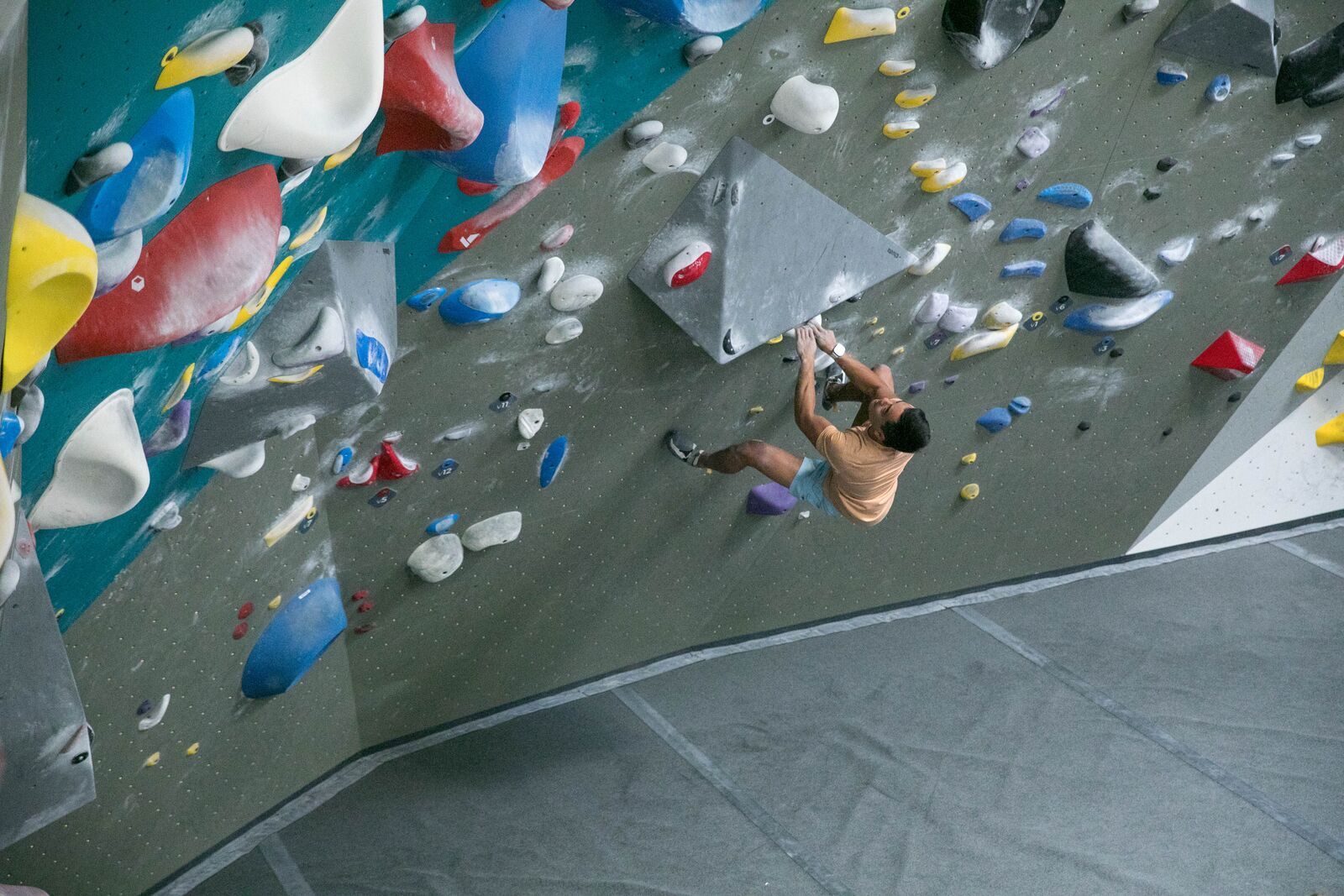The 5 Most Common Climbing Injuries (& How to Prevent Them)
Training for Climbing | Climbing Tips | Climbing Techniques | Climbing Technique
Climbing is one of the most rewarding (and demanding) sports out there. Whether you’re chasing your next boulder project or logging endurance laps on the rope wall, your body is constantly adapting to stress.
At The Climb Clinic, we work with climbers of all levels (from first-time gym members to seasoned 5.14 crushers) and we’ve noticed that most climbing-related injuries fall into just a few categories.
Here are the five most common injuries we see and how to prevent them at Movement.
1️⃣ Finger Pulley Strains 🖐️
The injury: A classic climber complaint. These usually happen when you overload the finger flexors in a crimp or half-crimp, especially when fatigued, moving dynamically, or crimping while your foot slips.
What you can do at Movement:
- Start Light and Progressive – Begin with light open-hand hangs on the fingerboard. Focus on gradually warming up your fingers without straining them.
- Controlled Fingerboard Pulls (“Recruitment Pulls”) – With your feet on the ground, actively pull on the fingerboard. This allows you to load your fingers in a controlled way, building strength consistently from session to session.
- Vary Your Grip Positions – Rotate between open-hand, half-crimp, and pinch grips while climbing. This helps reduce overuse stress on any single finger or tendon.
- Traverse to Activate – Spend 5–10 minutes on traverse or spray walls. This engages finger and grip coordination while preparing muscles and tendons for climbing movements. Movement RiNo has a fantastic traverse wall.
Our class recommendations:
2️⃣ Elbow Pain 💪
The injury: Pain along the inside (“golfer’s elbow”), outside (“tennis elbow”), or middle (“climber’s elbow”) of the elbow, often due to high-volume pulling or insufficient recovery.
What you can do at Movement:
- Dynamic Mobility – Gently moving the wrists, elbows, and forearms helps increase blood flow, warm tissues, and prepare tendons and muscles for climbing loads.
- Look Up & Down the Chain – Warming up nearby joints, like the wrists and shoulders, helps distribute load more effectively through your arms and upper body, preparing the entire system for climbing and reducing stress on any single area.
- Strength & Load Tolerance – Gradual activation and controlled load exposure help the forearms adapt to climbing demands, improving endurance and reducing the risk of overuse injuries. Try Forearm Flexor or Forearm Extensor strengthening.
Our class recommendations:
3️⃣ Shoulder Impingement or Instability 🦴
The injury: Shoulders take a beating from repeated overhead positions, gastons, and compression moves. Pain often signals fatigue, deconditioning, reduced stability, and/or mobility restriction.
What you can do at Movement:
- Scapular Control – Activating and controlling the shoulder blades helps stabilize the shoulder complex, improving force transfer and reducing the risk of overloading the elbows, forearms, and fingers.
- Conscious Climbing – Being mindful of movement quality, especially when fatigued, helps prevent sudden stress on the joints and tendons, supporting safer and more efficient climbing.
- Strength & Stability Training – Building overall mobility, strength, and stability prepares the body to tolerate climbing loads, enhances performance, and reduces the risk of injury over time.
Our class recommendations:
4️⃣ Neck & Upper Back Tension 🧍♂️
The injury: Long sessions of belaying or route-reading, combined with poor posture during pulls, can cause tightness and stiffness.
What you can do at Movement:
- Overhead Mobility Checklist – Preparing for overhead movement ensures your shoulders, elbows, and neck move efficiently and reduces stress on smaller joints.
- Upper Back Mobility – A mobile upper back helps keep shoulders aligned, improves posture, and allows forces to flow smoothly through the upper body.
- Shoulder Activation – Engaging the shoulder muscles before climbing stabilizes the joint, improves strength transfer, and lowers the risk of strain during overhead moves on your neck and back.
- Belay Goggles - Take the strain off your neck if you can
Our class recommendations:
5️⃣ Knee & Hip Tweaks 🦵
The injury: Occur when the lower body is forced into awkward positions, like aggressive drop-knees, heel hooks, or high steps without proper hip mobility.
What you can do at Movement:
- Drop Knee Drills: Improve hip rotation and body positioning to stay closer to the wall, conserve arm strength, and move more efficiently.
- High Step Mobility: Increase hip, hamstring, and ankle flexibility to reach higher footholds without overreaching with your arms, reducing fatigue and injury risk. Try high step drills to increase your mobility.
- Lower Body Strengthening: Build leg and glute strength to push yourself upward, maintain balance, and stabilize tricky positions, making climbing more powerful and efficient.
Our class recommendations:
🧠 Final Thoughts
Reducing injury isn’t about avoiding climbing hard. Most climbing injuries are overuse injuries, so small adjustments to volume, sleep, nutrition, stress, and hydration can make a huge difference.
A thoughtful strength training plan that complements your climbing can be one of the most powerful ways to reduce injury, build resilience, and handle the stress of all facets of climbing.
Whether you’re working your first V1 or chasing your next V16, the goal is the same: to keep climbing stronger, smarter, and longer.
If you’re dealing with a nagging issue or want a plan tailored to your climbing goals, connect with us at The Climb Clinic. We specialize in helping climbers train, recover, and perform at their best. Be sure to follow The Climb Clinic on Instagram for more helpful resources, tips, and drills to keep you climbing safely and efficiently.


